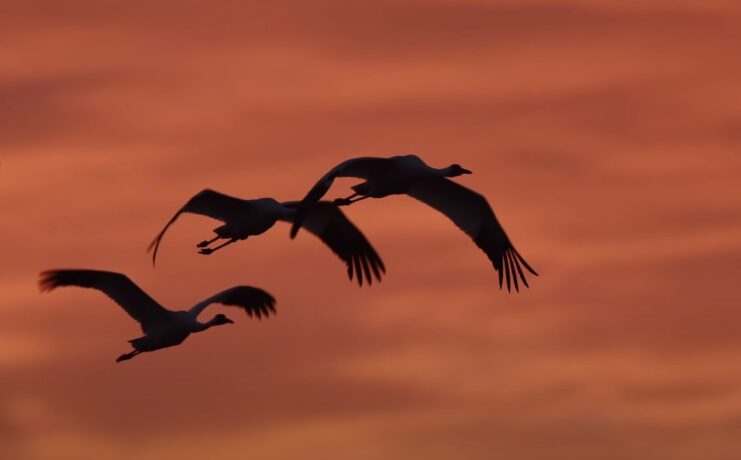Birdwatching in Florida is a rewarding activity due to the diverse range of bird species, especially the large ones.
Here’s a detailed look at the ten biggest birds in Florida.
1. American White Pelican
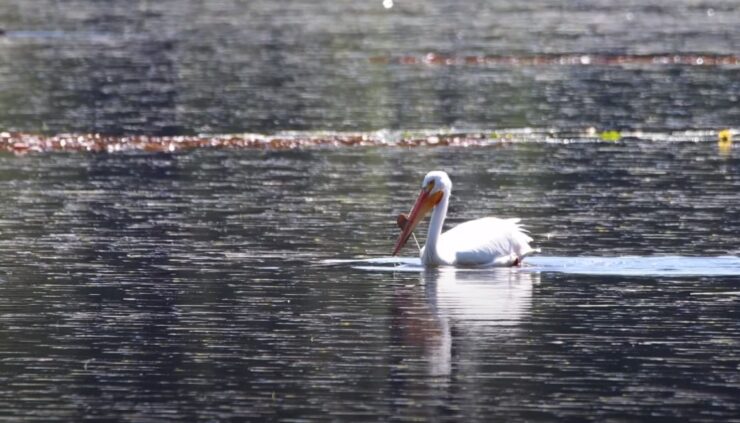
The American White Pelican is the largest bird in Florida, measuring 60-63 inches in length with an impressive wingspan of 96-110 inches. This bird is easily recognizable by its white body and large orange beak, which it uses to scoop up fish.
These pelicans are often seen in coastal regions and inland lakes, where they gather in large flocks.
They are known for their cooperative hunting techniques, working together to herd fish into shallow waters for easier feeding.
Despite their size, American White Pelicans are graceful fliers, often soaring high in the sky with slow, powerful wingbeats.
Watching these majestic birds glide over Florida’s waterways is a sight to behold.
2. Trumpeter Swan
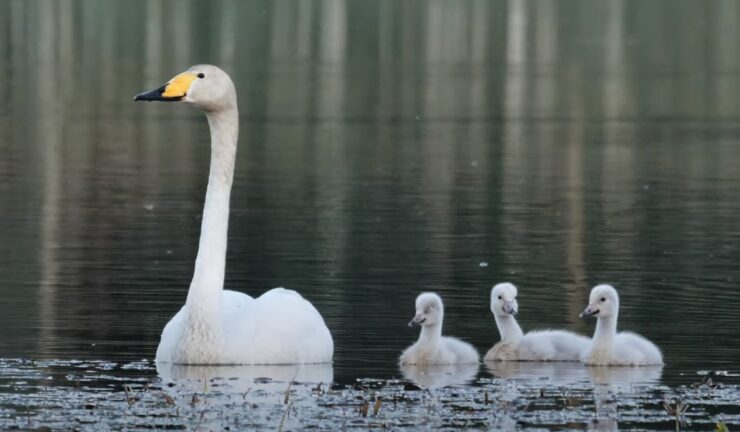
The Trumpeter Swan, with a length of 58-72 inches and a wingspan of 72-102 inches, is another large bird found in Florida.
Known for its striking pure white feathers and black beak, this swan is the largest native waterfowl species in North America.
Trumpeter Swans prefer freshwater lakes and ponds, where they feed on aquatic plants. They are also known for their loud, trumpet-like calls that can be heard over long distances.
These swans are a symbol of grace and beauty, often seen gliding effortlessly across the water.
Despite their elegance, Trumpeter Swans are strong and resilient birds, capable of long migrations between their breeding and wintering grounds.
3. Whooping Crane

The Whooping Crane, standing at 52-52.5 inches tall with a wingspan of 87-88 inches, is one of the tallest birds in Florida. This crane is easily identified by its white body, red crown, and black wingtips.
Whooping Cranes are found in wetlands and marshes, where they feed on a diet of insects, small fish, and crustaceans.
These birds are known for their elaborate courtship dances, which involve leaping, flapping, and calling to attract a mate.
They are an endangered species, with significant conservation efforts in place to protect their habitats and increase their populations.
4. Brown Pelican
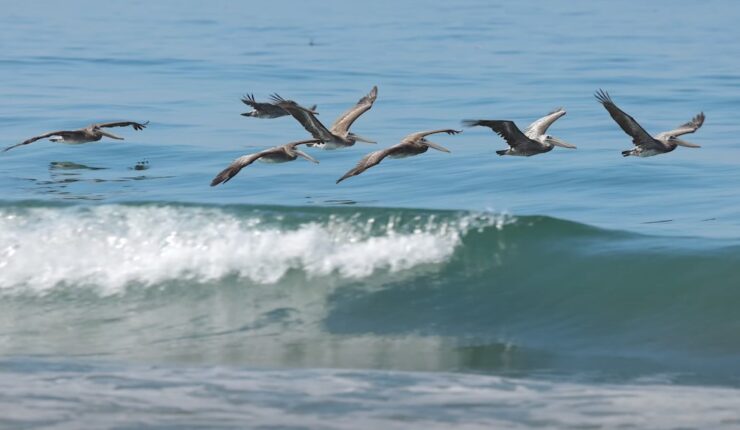
The Brown Pelican, measuring 48-50 inches in length with a wingspan of 78-84 inches, is a familiar sight along Florida’s coastlines. This pelican is easily recognized by its brown body and large throat pouch, which it uses to scoop up fish.
Brown Pelicans are expert divers, plunging from great heights to catch their prey in the water.
They are often seen resting on piers and jetties, where they can be observed preening their feathers or socializing with other pelicans.
Despite facing challenges such as pollution and habitat loss, Brown Pelicans have made a remarkable recovery and are now commonly seen in coastal areas.
5. Great Blue Heron
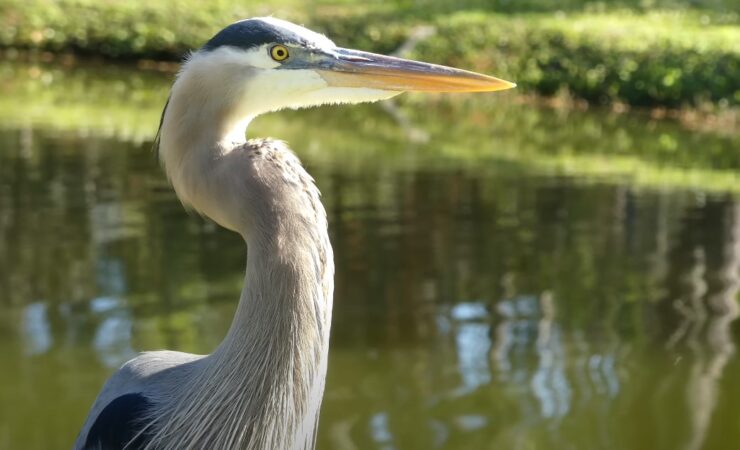
The Great Blue Heron is one of Florida’s most iconic wading birds, standing 46-52 inches tall with a wingspan of 77-82 inches. This heron has a striking blue-gray body, long neck, and long legs, making it easy to identify.
Great Blue Herons are found in wetlands, rivers, and lakes, where they hunt for fish, frogs, and other small aquatic animals.
These birds are patient hunters, often standing still for long periods before striking quickly to catch their prey.
Great Blue Herons are solitary birds, usually seen alone or in small groups. Their graceful presence adds a touch of elegance to Florida’s waterways.
6. Wild Turkey
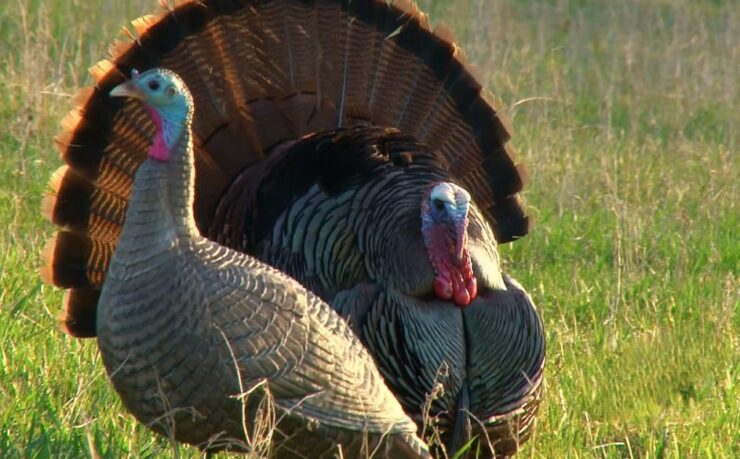
The Wild Turkey, measuring 43-45 inches in length with a wingspan of 49-57 inches, is a well-known bird in Florida.
Turkey has a dark body with iridescent feathers and a fan-shaped tail. Wild Turkeys are found in forests and grasslands, where they forage for:
- Seeds
- Insects
- Small reptiles
They are social birds, often seen in flocks, especially during the fall and winter months. Wild Turkeys are known for their distinctive gobbling calls, which are used by males to attract females during the breeding season.
These birds are also strong fliers, capable of short, rapid flights to escape predators. Wild turkeys have a lifespan of two to three years, which is far more than some other animals.
7. Great Egret
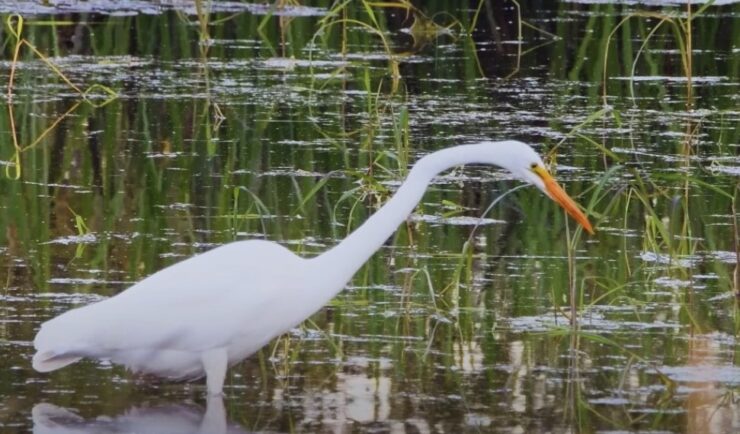
The Great Egret, with a length of 37-41 inches and a wingspan of 54-55 inches, is a large and elegant bird commonly found in Florida’s wetlands.
This egret is easily recognized by its all-white body, long neck, and yellow beak. Great Egrets feed on fish, frogs, and small mammals, which they catch by standing still and striking quickly with their sharp beaks.
They are often seen wading slowly through shallow water, searching for prey. Great Egrets are social birds, nesting in large colonies in trees near water. Their graceful movements and striking appearance make them a favorite among birdwatchers.
8. Wood Stork
The Wood Stork, standing 35-45 inches tall with a wingspan of 65-66 inches, is a unique and large bird found in Florida’s wetlands. This stork has a white body with black flight feathers and a distinctive bald head.
Wood Storks feed on fish, frogs, and small invertebrates, which they catch by wading through shallow water and using their beaks to sense prey. These storks are known for their communal nesting habits, often building large nests in trees near water.
Despite being listed as an endangered species, Wood Storks have made a comeback in recent years, thanks to conservation efforts.
9. Sandhill Crane
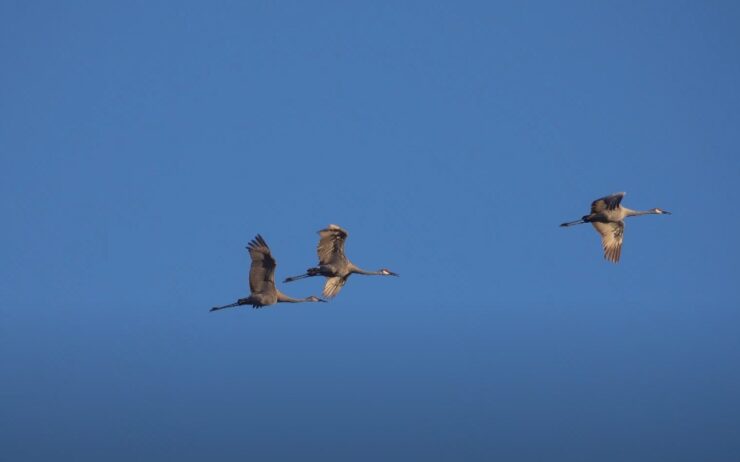
The Sandhill Crane, with a length of 34-48 inches and a wingspan of 73-90 inches, is a tall and elegant bird found in Florida’s grasslands and wetlands. This crane has a gray body with a distinctive red forehead.
Sandhill Cranes are known for their loud, trumpeting calls, which can be heard from great distances. They feed on a diet of grains, insects, and small vertebrates. Sandhill Cranes are also known for their elaborate courtship dances, which involve leaping, bowing, and flapping their wings.
They are social birds, often seen in large flocks, especially during migration.
10. Bald Eagle
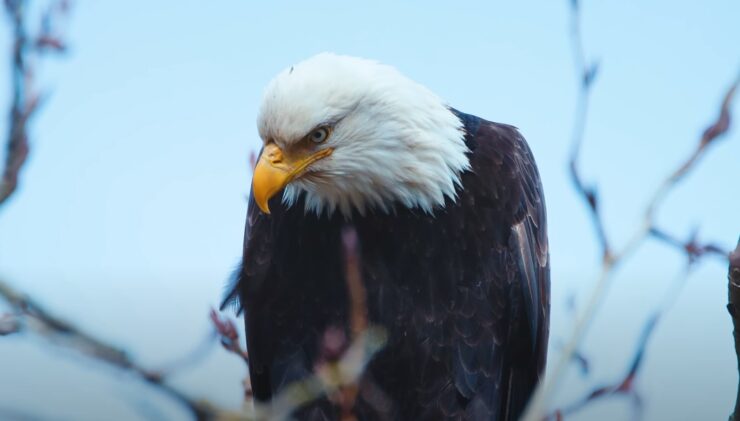
The Bald Eagle, measuring 34-43 inches in length with a wingspan of 72-96 inches, is a symbol of strength and freedom. This eagle is easily recognized by its white head and tail, dark brown body, and yellow beak.
Bald Eagles are found near water bodies, such as lakes and rivers, where they hunt for fish. They are powerful fliers, capable of soaring to great heights. Bald Eagles build large nests in tall trees, where they raise their young.
Despite facing challenges such as habitat loss and pollution, Bald Eagles have made a significant recovery and are now commonly seen in Florida.
Summary
Florida’s diverse bird species, especially the large ones, offer birdwatchers an exciting opportunity to observe and appreciate nature’s wonders.
These majestic birds not only enhance the beauty of Florida’s landscapes but also highlight the importance of conservation efforts.

